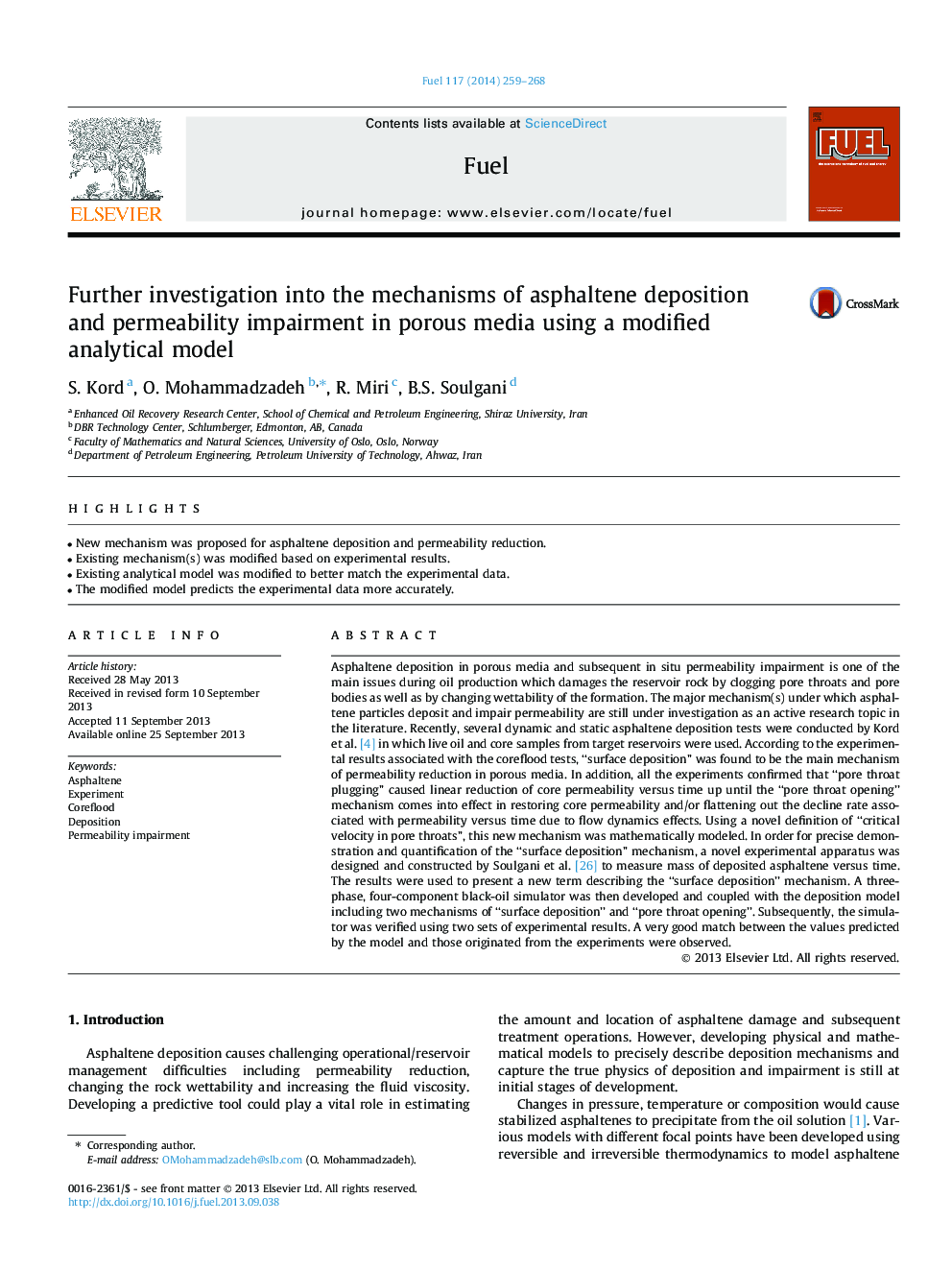| Article ID | Journal | Published Year | Pages | File Type |
|---|---|---|---|---|
| 10271958 | Fuel | 2014 | 10 Pages |
Abstract
Asphaltene deposition in porous media and subsequent in situ permeability impairment is one of the main issues during oil production which damages the reservoir rock by clogging pore throats and pore bodies as well as by changing wettability of the formation. The major mechanism(s) under which asphaltene particles deposit and impair permeability are still under investigation as an active research topic in the literature. Recently, several dynamic and static asphaltene deposition tests were conducted by Kord et al. [4] in which live oil and core samples from target reservoirs were used. According to the experimental results associated with the coreflood tests, “surface deposition” was found to be the main mechanism of permeability reduction in porous media. In addition, all the experiments confirmed that “pore throat plugging” caused linear reduction of core permeability versus time up until the “pore throat opening” mechanism comes into effect in restoring core permeability and/or flattening out the decline rate associated with permeability versus time due to flow dynamics effects. Using a novel definition of “critical velocity in pore throats”, this new mechanism was mathematically modeled. In order for precise demonstration and quantification of the “surface deposition” mechanism, a novel experimental apparatus was designed and constructed by Soulgani et al. [26] to measure mass of deposited asphaltene versus time. The results were used to present a new term describing the “surface deposition” mechanism. A three-phase, four-component black-oil simulator was then developed and coupled with the deposition model including two mechanisms of “surface deposition” and “pore throat opening”. Subsequently, the simulator was verified using two sets of experimental results. A very good match between the values predicted by the model and those originated from the experiments were observed.
Related Topics
Physical Sciences and Engineering
Chemical Engineering
Chemical Engineering (General)
Authors
S. Kord, O. Mohammadzadeh, R. Miri, B.S. Soulgani,
